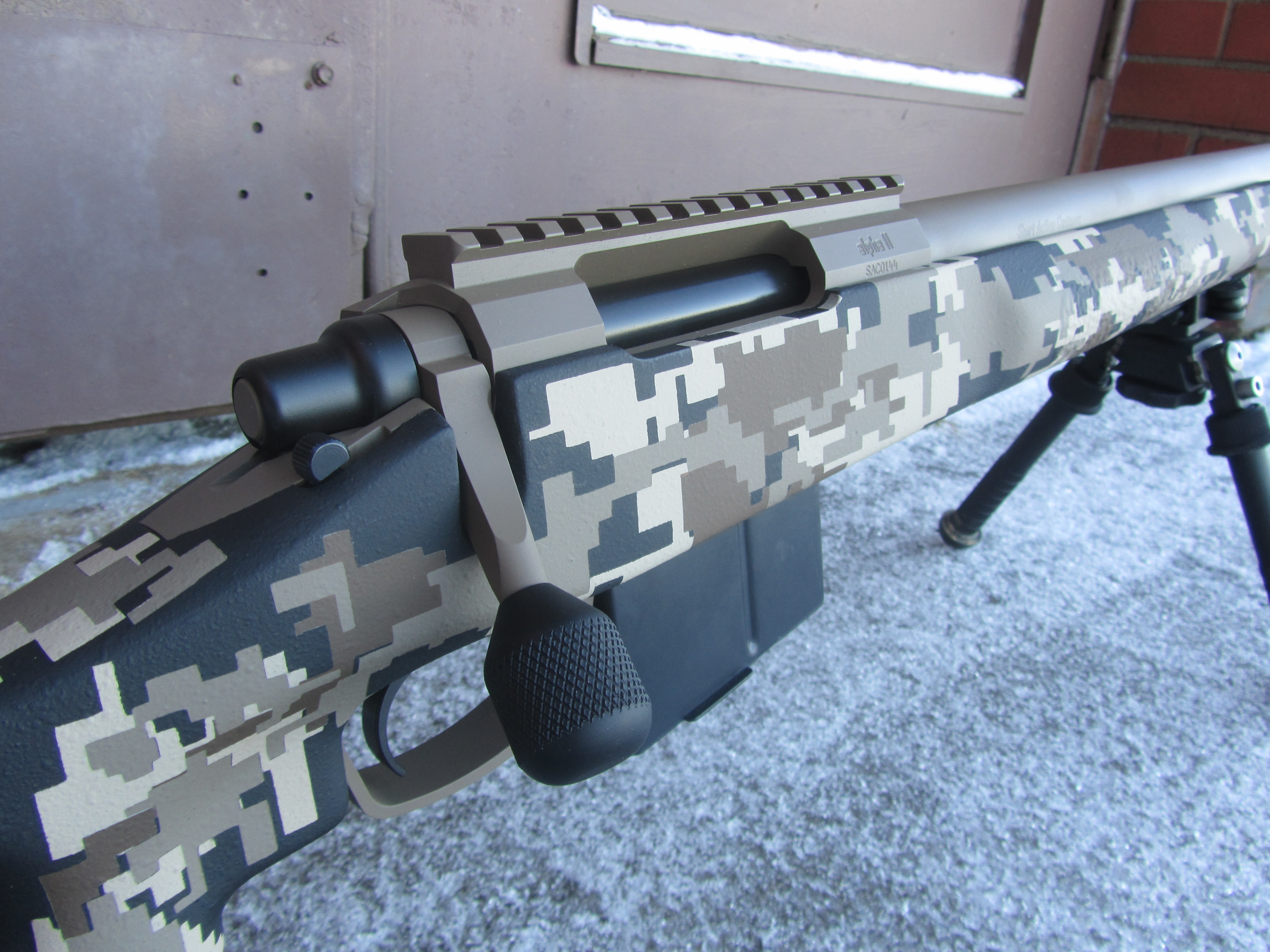
Camp Gun of the Buffalo Runner
The Texas Brush Popper
Now and then, maybe usually, I seem to get a glimpse of myself as a buffalo runner somewhere in the late 1870s. So, in following that glimpse and hoping for a better view of it, I add things to my outfit that might be appropriate for those times.
One of the things I wanted was a camp gun, something in addition to the
Sharps rifle that certainly will be there. The little Texas Brush Popper from Cimarron Repeating Arms fills that bill nicely, in .44/40 caliber.
Good impressions about this short rifle began building before it was completely out of the box.
The wood in figure, fit and finish highly impressed me. This rifle is stocked very nicely and the fit to the tang is so good that it simply isn’t a coincidence. The forearm is not fitted quite as nicely, but the
fine figure of the grain and the finish of the wood are there to appreciate as well. As the gun came farther out of the box, more impressive characteristics were noted.
Next compliments go to the sights on this rifle. What I’m referring to is the fit of those sights to the barrel. On too many of today’s copies of the old Western guns, the sights are ill fitted, with air space between the sights and the gun’s barrel.
That isn’t so with this gun, those sights are resting right on the barrel as they should be, and no extra light can be seen in or above the
dovetails. Little things like the fitting of the sights are certainly tokens of good craftsmanship.
Both the front and rear sights are equipped with set screws which need
to be loosened a bit before any windage adjustments are made, then
tightened again once the windage is set. The rear sight, of course, is adjustable for elevation as well.

This rifle comes with an attractive color from casehardening on the receiver, lever, trigger, and hammer. On the original Winchester rifles, color casehardening was available as an added cost extra, so the color casehardening can be considered just as authentic as it is attractive. The rest of the rifle’s steel features which can be seen are nicely finished in a well polished dark blue. These pieces include the barrel and magazine tube, buttplate, nose cap, and the dust cover on top of the receiver.

THE ORIGINAL WINCHESTER MODEL 1873 had an evolution with small but noticeable changes during its 50-year span of manufacturing. This gun from Cimarron represents one of the last versions, or third model, because it has hidden hammer and trigger pivot screws, and the dust cover slides on an integral “ramp” on the top of the receiver.
This rifle has a trigger-block safety which doesn’t allow the trigger to be pulled unless the lever is held tightly against the lower tang. In other words, the trigger block doesn’t allow the gun to be fired unless the action is completely closed. That trigger block became a standard feature on originals in 1879.
My information about the Winchester Model 1873 rifles comes from The
Winchester Handbook by George Madis. That same handbook says the
standard barrel length for a Model ’73 rifle was 24 inches, but barrels were produced from 14 to 36 inches. Also, half-round barrels were made in all lengths, but they are considered very rare. In other words, there might be an original that looks just like this Texas Brush Popper, but we could have a hard time finding it. I do value this rifle’s authenticity.
Markings can certainly be complimented on this rifle. On the barrel is
“Cimarron Repeating Arms,” with an address and patent dates forward of
the rear sight, plus “44 W.C.F.” just ahead of the receiver ring. On the
upper tang is “Model 1873” in script.
The serial number is on the lower tang behind the lever, and there are some almost unnoticeable proof marks or inspection stampings on the bottom of the receiver. Also on the lower tang is found “A. Uberti-Italy,” but you must open the lever to see it. Those markings certainly add to the Western flavor of this rifle.
Cimarron says their Texas Brush Popper version of their Model 1873
lever-action rifle is the best balanced, lightest and quickest lever action available today. I won’t disagree with that.
And the Brush Popper comes with options such as a straight grip or a deluxe checkered pistol grip as well as a couple other calibers. The suggested retail prices for this rifle are $1,272.70 for its standard version and $1,350.70 for the checkered pistol-grip model. AmSJ
Editor’s note: For a better look at these authentic versions of the old ’73, take a peek at Cimarron’s website at cimarron-firearms.com. Mike Nesbitt’s articles about black powder shooting can be found in back issues of certain magazines from nearly 40 years ago, and he’s learned a few things over that span of time. Join him now as newer stories continue in our black powder column.
With Mike, you can talk about black powder cartridge shooting, from paper patched bullets to the famous “collar button,” and we’ll hit on traditional muzzleloading too. For Mike, shooting begins with black powder.
ARTICLE AND PHOTOS BY MIKE NESBITT




